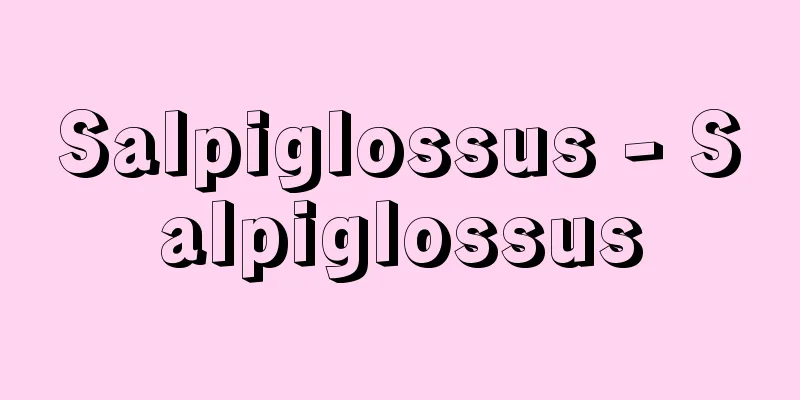Genre painting (English: genre painting)

|
Paintings based on real, everyday life. The term originates from the fact that critics in the late 17th century divided paintings that dealt with "major themes" such as historical, mythological, and religious paintings into a "small category" (genre mineure) that dealt with everyday scenes, still lifes, and animals. The term was established when Greuze, an 18th-century French painter who painted domestic and didactic subjects, was accepted by the Academy as a "genre painter," and became common in the 19th century when Impressionist painters began to depict civic life in large numbers. In the West, it is also simply called "genre." Historically, however, genre painting has been developed since ancient times, combining with religion, symbolism, allegorical expression, and so on. The murals and reliefs of ancient Egyptian tombs depicting daily life and work such as farming and hunting, the scenes of life on ancient Greek vase paintings and tomb reliefs, and the murals and mosaics of Rome all show that interest in depicting genre scenes was an important part of pictorial depiction. In the late Middle Ages, both in Flanders and Italy, religious paintings were often painted in the interiors, clothing, and customs of the same era, and sculptures in cathedrals showing "lunar work" also show genre depictions. Among them, hand-painted decorative paintings show almost pure genre scenes with the expression of the lunar calendar. A representative example is "The Most Sumptuous Book of Hours of the Duke of Berry" by the Limbourg brothers. In the 16th century, the tendency to depict genre scenes in religious paintings further advanced, and allegorical expressions such as "The Five Senses" and "Vanity" began to be used in the depiction of genre scenes. However, in the 17th century, many painters, such as Caravaggio in Italy, Rembrandt, Vermeer, Pieter de Hooch in the Netherlands, and Louis Le Nain in France, brought the reality of everyday life into high-level pictorial expression, and genre painting in the true sense of the word was born. Alongside "noble and great" religious and mythological paintings, or grandiose decorative paintings, depictions of everyday life are often seen in both Protestant and Catholic countries, which is thought to indicate the enrichment of civic life and its awareness of it during this period. In the 18th century, this tendency also developed in a wide range, such as Watteau's semi-dreamy expression, Chardin's quiet honest view of reality, and Hogarth's satirical expression, and became one of the most important genres of painting with the establishment of civic life and the glorification of everyday life in the 19th century and later, Realism and Impressionism. In Japan, depictions of customs can be seen from the Heian period in the form of picture scrolls of annual events and lucky pictures, but independent works such as Rakuchu and Rakugaizu, festival pictures, and amusements were produced from the end of the Middle Ages, and this trend led to the rise of ukiyo-e in the Edo period. [Kimio Nakayama] [Reference] | e |Source: Shogakukan Encyclopedia Nipponica About Encyclopedia Nipponica Information | Legend |
|
日常の現実生活に取材した絵画。17世紀末、歴史画、神話画、宗教画などの「大テーマ」を扱う作品に対して、日常風俗や静物、動物などを題材とする絵画を「小さな部門」genre mineureと批評家たちが区分したことに語源をもつ。18世紀フランスの家庭的・教訓的題材を描いた画家グルーズが、アカデミーに「ジャンルの画家」として受け入れられたときこの用語は定着し、19世紀に、市民生活が印象派の画家たちによって数多く取り上げられたとき一般化した。西洋では単に「ジャンル」ともよばれている。 しかし歴史的には、宗教、象徴主義、寓意(ぐうい)的表現などと複合しつつ、古くから風俗画の展開がみられる。古代エジプト墳墓の壁画や浮彫りなどに描かれた、農耕・狩猟など日常生活や労働を表す作品、古代ギリシアの壺絵(つぼえ)や墓碑浮彫りの生活情景、ローマの壁画やモザイクのそれなど、いずれも、風俗的情景の描写への関心が絵画的描写の重要な部分であったことを示している。中世後期、フランドルでもイタリアでも、宗教画は同時代の室内・服装・風俗の設定で描かれることがしばしばあり、大聖堂の「月暦(つきごよみ)の労働」を表す彫刻も風俗描写をみせている。なかでも手写本装飾画は、月暦の表現でほとんど純粋な風俗図をみせてくれる。ランブール兄弟による『ベリー公のいとも豪華なる時祷書(じとうしょ)』などがその代表例である。 16世紀は、宗教画の風俗的設定の傾向をいっそう進めるとともに、「五感」「虚栄」などの寓意的表現を風俗描写に託し始める。 しかし、17世紀に、イタリアのカラバッジョ、オランダのレンブラント、フェルメール、ピーテル・デ・ホーホ、フランスのルイ・ル・ナンなどの多くの画家たちが、日常生活の現実性を高い絵画的表現にもたらし、真の意味での風俗画が生まれる。「高貴で偉大」な宗教画や神話画、あるいは壮大な装飾画に並んで、日常性の描写が新教・旧教のいずれの国々にも多くみられるが、このことは、この時期における市民生活の充実とその自覚を示すものと考えられる。18世紀においても、この傾向は、ワトーのなかば夢想的表現、シャルダンの静かな現実直視、ホガースの風刺的表現など、多様な幅をもって展開し、19世紀以降の市民生活の確立、日常性の賛美のなかで生まれる写実主義、印象主義によって、もっとも主要な絵画ジャンルの一つとなる。 日本においても、年中行事絵巻、縁起絵などの形で平安時代から風俗描写がみられるが、独立したものとしては、洛中(らくちゅう)洛外図、祭礼図、遊楽図などが中世末から行われ、この流行は江戸時代の浮世絵の隆盛へとつながってゆく。 [中山公男] [参照項目] | |出典 小学館 日本大百科全書(ニッポニカ)日本大百科全書(ニッポニカ)について 情報 | 凡例 |
<<: Fuzoku Gahou - Fuzoku Gahou
>>: Adult entertainment business - Adult entertainment business
Recommend
Hazel grouse - Ezoraicho (English spelling)
It is a bird of the order Phasianidae, family Pha...
Termination compensation - Uchikirihosho
When an employee is injured or falls ill due to wo...
Kwak Hee
A Chinese landscape painter from the Northern Song...
Don't eat dogs - Inukuwazu
...This is because it was believed that dogs are ...
City Lights - Machi no Hi (English)
American film. Directed by Charles Chaplin. Produ...
Horseshoe crab (Japanese name: Kabutogani)
An arthropod of the family Horseshoe crab, order S...
Bettaraichi - Bettaraichi
The market is held in Odenmacho and other areas ar...
Doodles of Nijogawara
A play on the subject: Last August, a graffiti pa...
Ishikawaya Kan'emon
…An art instructor in the Meiji period. Born as t...
Embossing - embossing
A processing method in which leather or fabric is ...
Flower language - Hanakotoba (English)
Also written as hanakotoba. A flower or plant is ...
International Boxing Federation
...His powerful boxing quickly attracted attentio...
Mageshima Island
An uninhabited island located in the sea about 10k...
Obaku sect
It is one of the three sects of Japanese Zen Budd...
island shelf
… slope continental slope — island slope — the sl...









